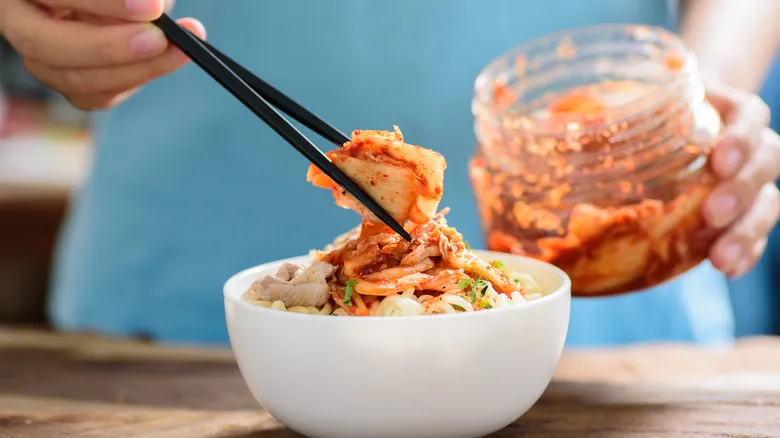The coldest part of your refrigerator is best
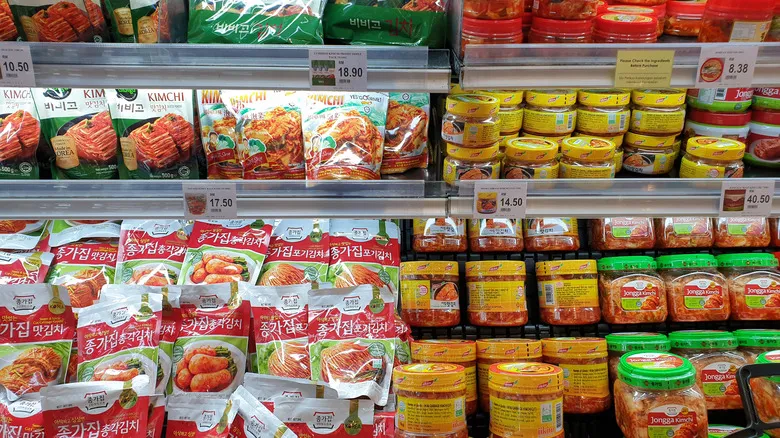
Regardless of the ingredients (kimchi can contain seafood as well as various vegetables), the most distinctive feature of kimchi is the fermentation process it undergoes at cool temperatures. Traditionally, ingredients were fermented in jars buried underground, designed to sustain families through Korea's harsh winters. Knowledge of weather patterns and the ideal temperatures for fermentation and storage was crucial not only for creating flavorful food but also for survival.
You can prepare kimchi in glass jars at home in just a few days, but the fundamental principles remain unchanged. Once fermented, the aim is to keep it stored between approximately 39 degrees Fahrenheit and freezing, or 32 degrees Fahrenheit. This applies both during the traditional slow fermentation process (gimjang is best enjoyed when daytime temperatures are below 39 degrees Fahrenheit and nighttime temperatures drop below freezing) and for long-term storage. Temperatures above 39 degrees Fahrenheit can lead to spoilage and the growth of harmful bacteria, while freezing halts the fermentation process.
Interestingly, the ideal range for your refrigerator is between 35 and 38 degrees Fahrenheit, making it perfect for storing kimchi. Avoid placing it in the doors, as they are typically the warmest areas of the fridge, and frequent opening and closing can cause temperature fluctuations. The crisper drawer is usually the coldest section, if you have space. Otherwise, store it at the back and bottom of the refrigerator. Experts advise against freezing kimchi, as it disrupts the fermentation process and causes the ingredients to crystallize, which alters their texture when thawed.
Other tips for storing kimchi
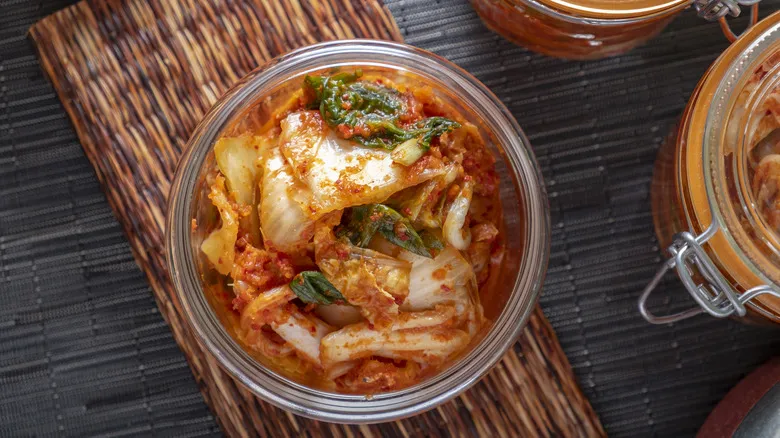
Similar to many other fermented foods, kimchi is rich in probiotics (beneficial bacteria and yeasts) that aid in the fermentation process. Unlike some other fermented items, the microorganisms remain active, and fermentation continues as long as it is stored correctly (slowing down in cooler temperatures). This means that, in addition to enjoying the advantages of active probiotics, your kimchi will keep evolving over time. The sour and umami flavors will deepen with months of storage. If you prefer a milder taste, consume a batch within a couple of weeks. For those who enjoy a stronger fermentation, try this simple tip to enhance store-bought kimchi.
Oxygen can be detrimental to long-term storage, as it encourages oxidation and may introduce mold spores. If your kimchi is in a zip-top plastic bag, make sure to squeeze out the air each time you seal it. If it's in a large jar, consider transferring the remaining kimchi into smaller jars or resealable plastic containers. Ensure that the solids are covered with as much of the remaining liquid as possible. Always use clean utensils (not your hands) when serving to minimize the risk of introducing mold or harmful bacteria.
If you notice white spots, don’t be alarmed! That’s simply yeast blooming and is harmless. You can scrape it off and continue to enjoy your kimchi by cooking it. However, if your pickled items have an off smell (bad, not just sour) or you see mold on the surface, it’s best to discard the entire batch.
Recommended

How Ice Cream Was Served Before Cones Were Invented
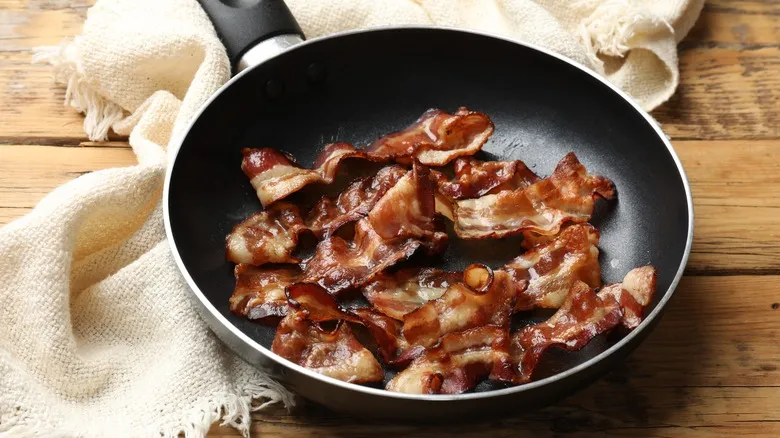
Why Throwing Out Your Bacon Grease Is A Huge Mistake

The Best Way To Store Radishes So That They Last Longer
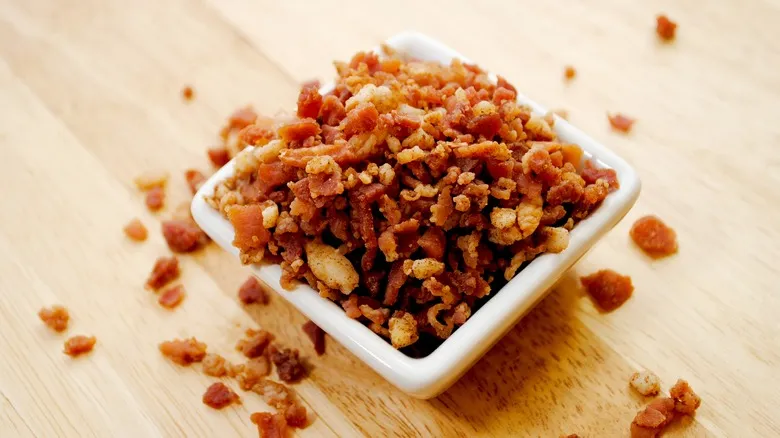
How Artificial Are Store-Bought Bacon Bits?
Next up

